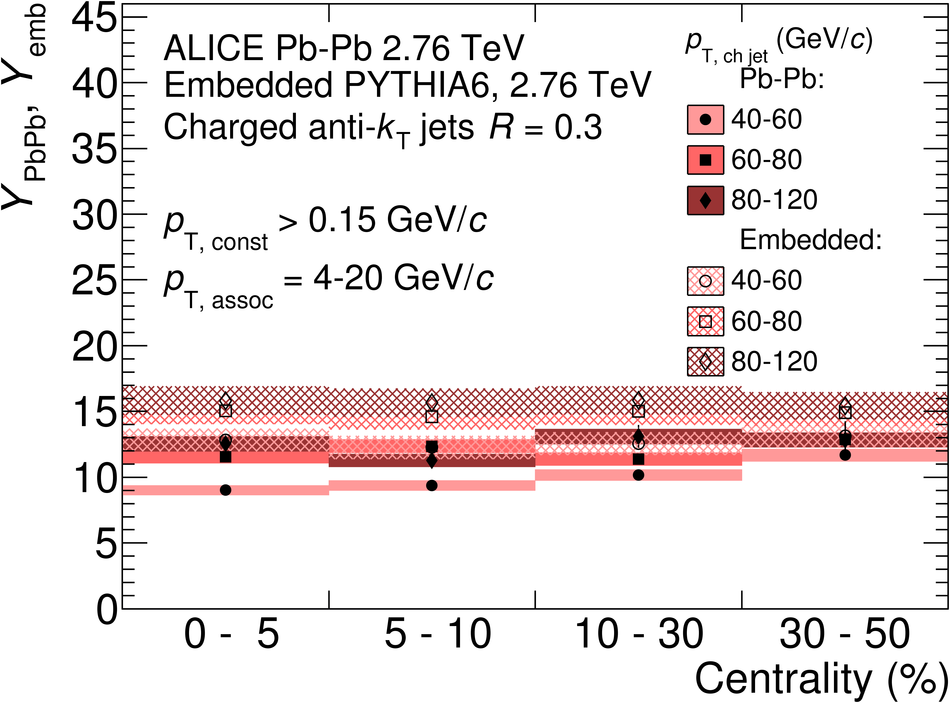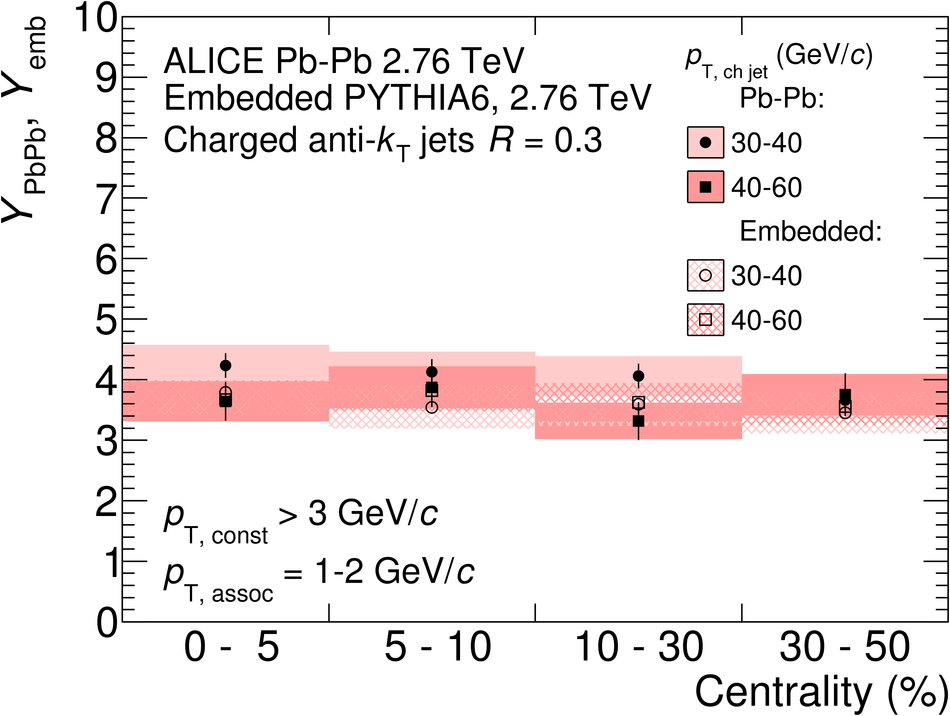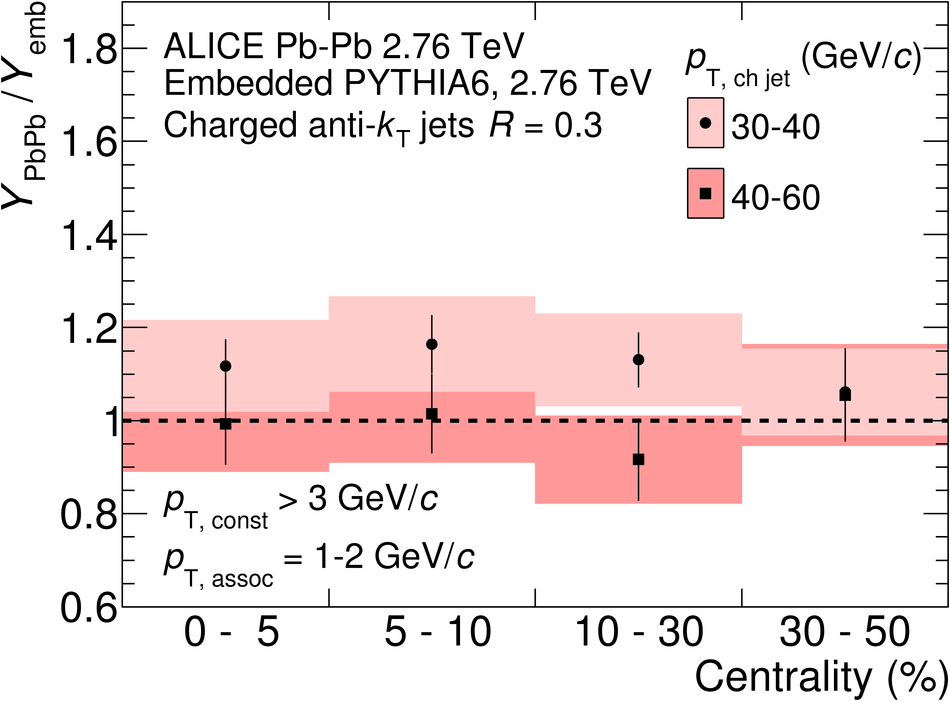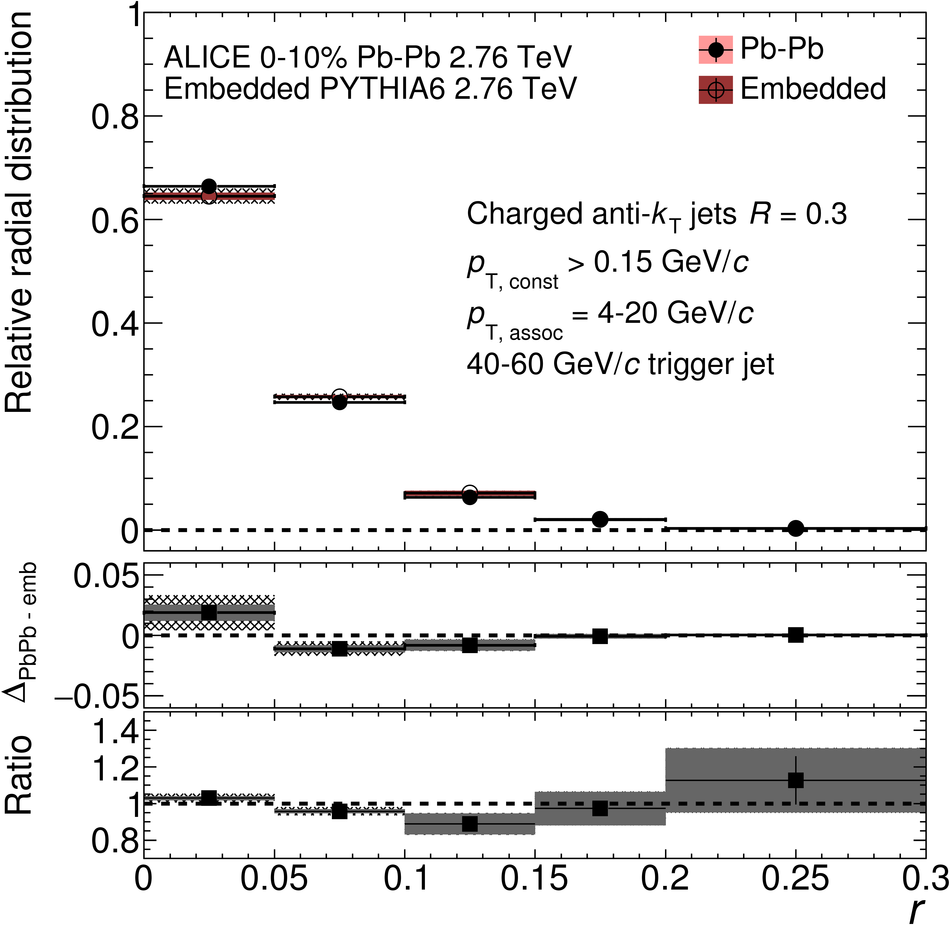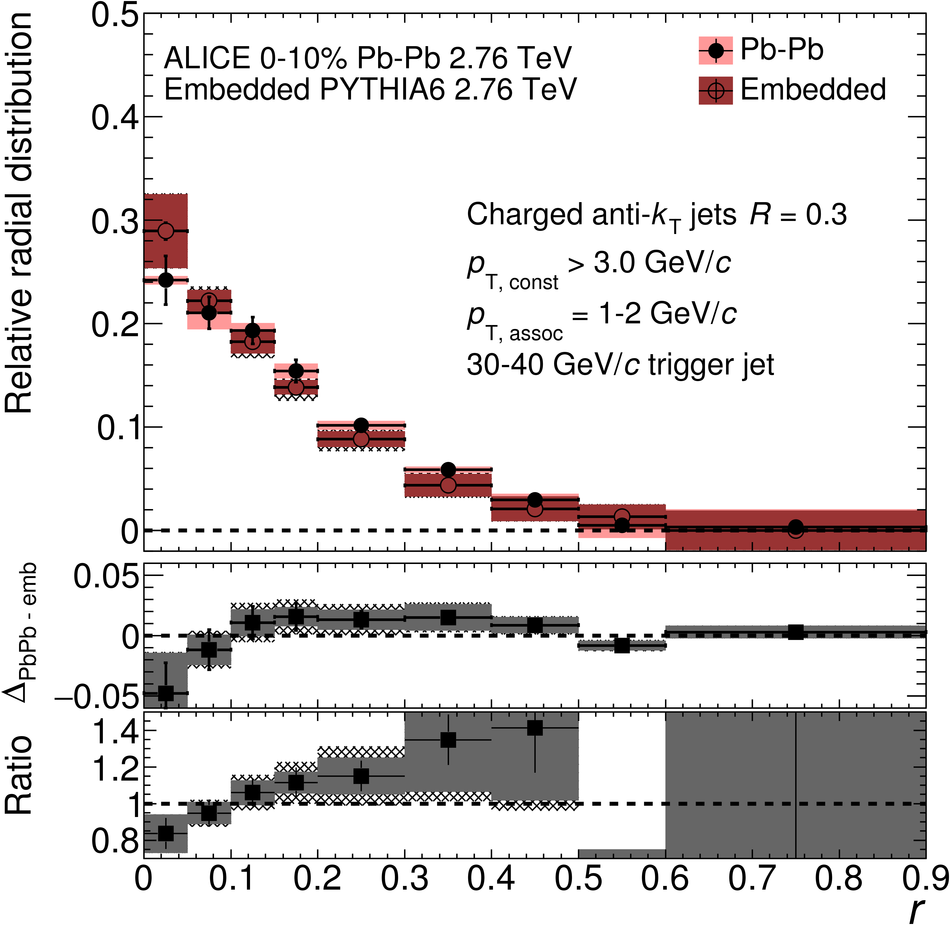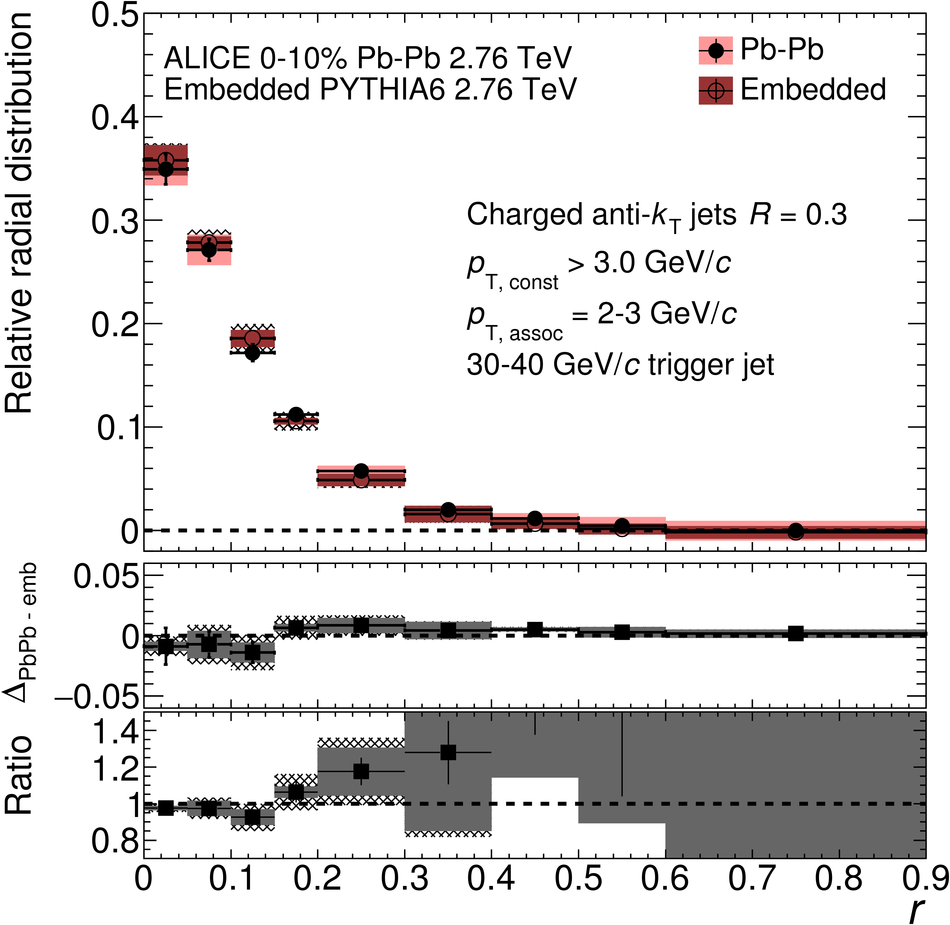The jet radial structure and particle transverse momentum ($p_{\rm{T}}$) composition within jets are presented in centrality-selected Pb-Pb collisions at $\sqrt{s_{\rm NN}}$ = 2.76 TeV. Track-based jets, which are also called charged jets, were reconstructed with a resolution parameter of $R=0.3$ at midrapidity $|\eta_\mathrm{ch\,jet}|<~0.6$ for transverse momenta $p_\rm{T,\,ch\,jet}=30$-$120$ GeV/$c$. Jet-hadron correlations in relative azimuth and pseudorapidity space ($\Delta\varphi$, $\Delta\eta$) are measured to study the distribution of the associated particles around the jet axis for different $p_\rm{T, assoc}$-ranges between 1 and 20 GeV/$c$. The data in Pb-Pb collisions are compared to reference distributions for pp collisions, obtained using embedded PYTHIA simulations. The number of high-$p_{\rm{T}}$ associate particles ($4<~p_\rm{T, assoc}<~20$ GeV/$c$) in Pb-Pb collisions is found to be suppressed compared to the reference by 30 to 10%, depending on centrality. The radial particle distribution relative to the jet axis shows a moderate modification in Pb-Pb collisions with respect to PYTHIA. High-$p_{\rm{T}}$ associate particles are slightly more collimated in Pb-Pb collisions compared to the reference, while low-$p_{\rm{T}}$ associate particle tend to be broadened. The results, which are presented for the first time down to $p_\rm{T,\,ch\,jet}=30$ GeV/$c$ in Pb-Pb collisions, are compatible with both previous jet-hadron-related measurements from the CMS Collaboration and jet shape measurements from the ALICE Collaboration at higher $p_{\rm{T}}$, and add further support for the established picture of in-medium parton energy loss.
Phys. Lett. B 796 (2019) 204-219
e-Print: arXiv:1904.13118 | PDF | inSPIRE
CERN-EP-2019-079


